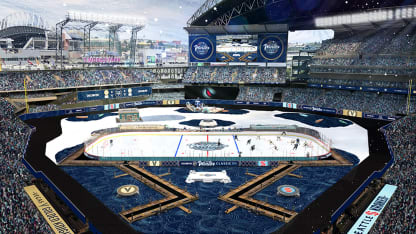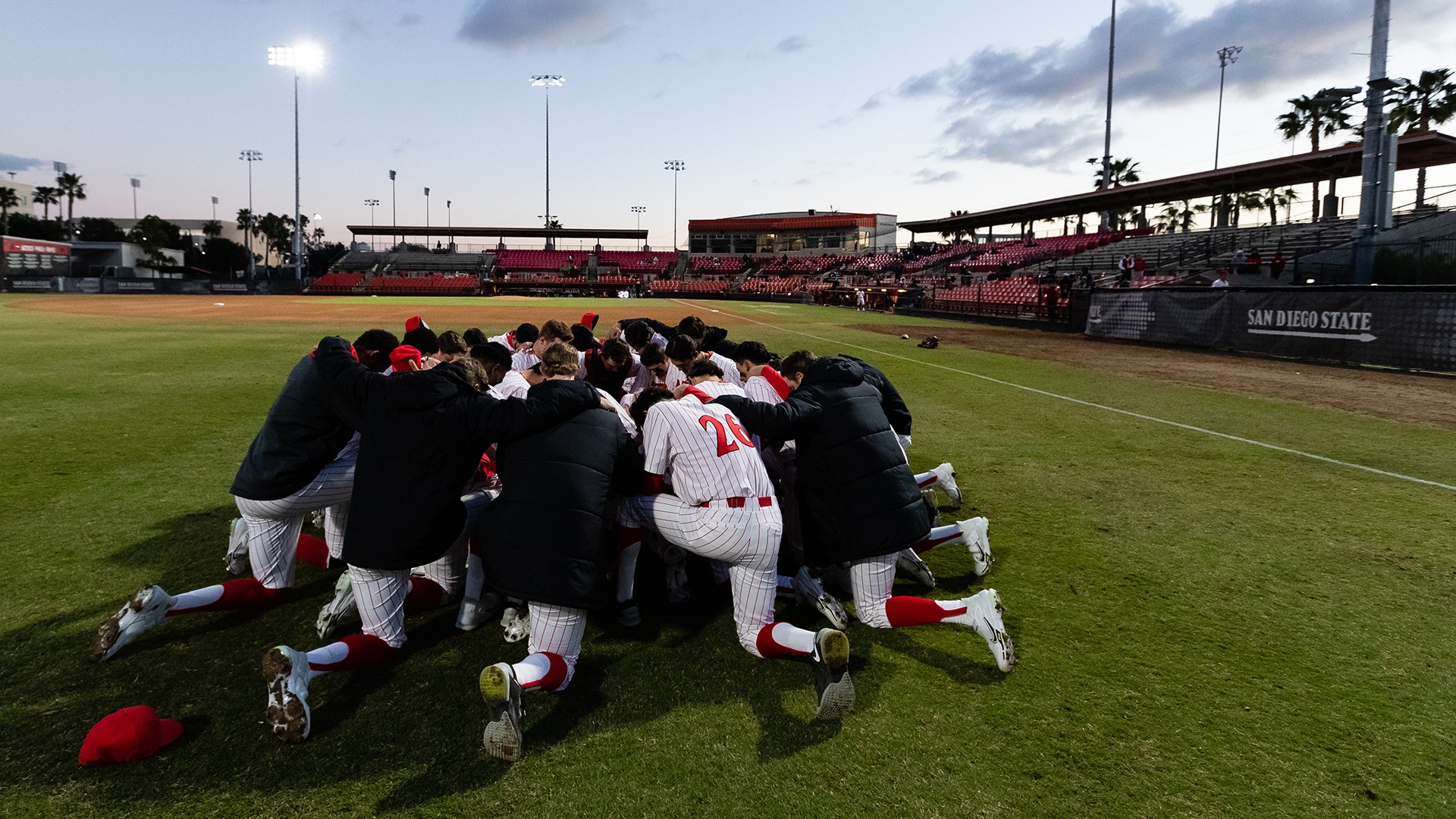Water a baseball field 1 to 3 times per week, tailoring to local weather conditions and field usage. Overwatering can be as detrimental as underwatering.
Maintaining a lush, resilient baseball field is crucial for the safety and performance of the players. Regular watering plays a significant role in preserving the field’s quality. A balance must be struck to avoid potential damage from both excessive dryness and oversaturation.
The watering frequency for a baseball field hinges on several factors, including soil composition, grass type, climate, and the intensity of field activity. Appropriate hydration ensures the turf remains healthy and robust, offering optimal playing conditions. By monitoring the field’s response to watering and making necessary adjustments, groundskeepers can maintain the field in prime condition for every game. Carefully managed water schedules contribute to the longevity and aesthetics of the baseball field while conserving water resources.
The Importance Of Hydration In Baseball Field Maintenance
The health of a baseball field is vital for the game’s success. Regular watering is crucial to maintaining not just the look, but also the functionality of the field. This leads us to the question: how often should you water a baseball field? This critical aspect of field maintenance not only affects how well the ball moves but also player safety and comfort. Get your irrigation right, and you’ll have a field that’s both durable and playable.
Balancing Field Durability And Playability
- Consistent moisture keeps the playing surface even and responsive.
- Over-watering can lead to a slippery and unsafe surface.
- Under-watering makes the field hard and increases player injury risk.
Watering should be tailored to seasonal needs and game schedules. Finding the right balance is key to achieving a field that’s both tough for play and safe for players.
Protecting Grass Health Through Adequate Watering
A green and healthy field is a cornerstone of baseball. The right watering schedule supports robust grass growth, which, in turn, impacts ball behavior and player interaction with the surface.
| Time of Day | Watering Benefits |
|---|---|
| Early Morning | Reduces evaporation and fungal growth. |
| Late Evening | Ensures water absorption and grass recovery. |
Implementing a watering strategy that takes into account the type of grass, climate, and soil ensures not only a lush, resilient turf but also a field that enhances the quality of play.

Credit: usctrojans.com
Anatomy Of A Baseball Field: Understanding Water Needs
Maintaining a baseball field is a fine art, and watering is a critical component. The field is not just grass and dirt; it’s a carefully crafted arena where every square foot impacts the game. Knowing how much and how often to water is essential to preserve the field’s quality and playability. Different areas have unique requirements, and understanding these is the key to a well-maintained field.
Soil Composition And Drainage Characteristics
Soil composition greatly affects water retention and drainage. A well-designed baseball field has a combination of sand, clay, and silt. This mix dictates how quickly the field dries after rain and how much irrigation it requires during dry periods.
- Sand allows for quick drainage but requires frequent watering.
- Clay holds moisture longer but can become compacted and hard.
- Silt, a middle ground, needs balanced watering.
A field’s subsurface drainage system also plays a role in water management. Proper drainage ensures the field dries quickly, remaining safe and playable.
Grass Type Variations And Their Water Requirements
Grass type is another crucial element in a field’s water needs. Different grasses require different amounts of water. Cool-season grasses, like Kentucky bluegrass and perennial ryegrass, are common in northern regions and need a consistent water supply.
| Grass Type | Water Needs |
|---|---|
| Kentucky Bluegrass | 1 to 1.5 inches per week |
| Perennial Ryegrass | 1 to 1.5 inches per week |
| Bermuda Grass (warm-season) | 0.5 to 1 inch per week |
Warm-season grasses, like Bermuda grass, thrive with less water and are common in southern fields. A water-efficient grass type reduces maintenance costs and conserves water.
Climate Considerations For Watering Schedules
A baseball field’s health heavily depends on proper watering. Understanding how to adjust watering habits is critical. Specific climate factors must guide these adjustments. Below explores the effectiveness of watering schedules in relation to the local weather patterns and the needs of the field throughout the year.
The Impact Of Local Weather Patterns
Local weather patterns directly influence a baseball field’s watering needs. Areas with high rainfalls may require less frequent watering. In contrast, arid regions often demand a more rigorous schedule. Watering should compensate for evaporation and wind that can dry out the field.
- Excessive rain: Scale back watering to prevent waterlogging.
- Dry spells: Increase watering to maintain healthy grass growth.
- Humidity levels: Adjust watering to avoid diseases and pests.
Seasonal Adjustments For Optimal Field Conditions
Seasons bring different challenges and requirements for a baseball field. Spring and Fall often bring milder conditions. These seasons may need moderate watering. Summer’s heat usually calls for more frequent watering to ensure a resilient playing surface. In Winter, the field’s need for water significantly decreases.
| Season | Watering Needs | Considerations |
|---|---|---|
| Spring | Moderate | Prepare for growing season. |
| Summer | High | Combat heat stress. |
| Fall | Moderate to Low | Prepare for dormancy. |
| Winter | Low to None | Protect against frost. |
Adjust your watering schedule with the season. Keep the field’s surface in peak condition year-round. A flexible approach ensures a baseball field remains both playable and safe.

Credit: www.nhl.com
Techniques For Effective Irrigation
Mastering the art of watering a baseball field is essential for healthy turf. Proper techniques ensure a strong playing surface. Ideal irrigation also conserves water. Let’s explore top irrigation strategies.
Manual vs. Automated Watering SystemsManual Vs. Automated Watering Systems
The choice between manual and automated systems impacts water efficiency and field quality. Consider these points:
| Manual Watering | Automated Systems |
|---|---|
|
|
Strategies For Uniform Water Distribution
Uniform distribution avoids overwatering and underwatering areas. Use these strategies:
- Check sprinkler coverage regularly to find gaps in water distribution.
- Adjust sprinkler heads for even coverage across the field.
- Utilize catch cans to measure output and adjust as necessary.
The Role Of Evapotranspiration In Watering Frequency
Proper watering sustains a baseball field’s health and playability. Evapotranspiration (ET) plays a vital role. ET is the sum of water evaporating from the ground and transpiration from plants. Understanding ET helps determine precise watering needs.
Calculating Water Loss And Replacement Needs
To maintain ideal field conditions, calculate your field’s water loss. This involves measuring ET rates. Then, calculate replacement needs to set watering schedules.
- Measure soil moisture to assess the water level.
- Factor in weather conditions, as they affect ET rates.
- Use historical data for trends and patterns.
Apply precise amounts. This conserves water and keeps fields in top shape.
Tools For Monitoring Evapotranspiration Rates
Various tools exist to monitor ET. They ensure accurate irrigation schedules.
| Tool Type | Function |
|---|---|
| Weather Stations | Gather local data for ET calculations. |
| Soil Sensors | Track soil moisture in real time. |
| ET Gauges | Provide direct ET rate measurements. |
Choose tools that fit your field’s size and budget. Consistent monitoring tailors watering to actual needs.
Signs Of Overwatering And Underwatering
Maintaining the perfect moisture level for a baseball field is crucial for lush, healthy grass. Observing signs of both overwatering and underwatering helps avoid damage. A well-balanced watering strategy promotes vibrant growth and prevents issues such as disease, weeds, and poor playability.
Recognizing Symptoms Of Water Stress In Grass
Grass under water stress displays distinct indicators. Look for:
- Discoloration: Blades turn a bluish-green or yellow.
- Footprints: Grass doesn’t spring back after being stepped on.
- Wilting: Blades fold or curl in an attempt to conserve water.
Consistently monitoring these signs prevents extreme water stress, keeping the field in top shape.
Dealing With Puddling And Compaction
Excess water leads to puddling and soil compaction. Recognize overwatering by:
- Puddles: Water collects in low areas after irrigation.
- Soft Ground: Soil feels spongy, promoting instability and injury.
- Suffocation: Roots can’t breathe, inhibiting growth.
To prevent compaction, aerate the field. This encourages deeper root growth and improves drainage. Adjust the watering schedule to allow the soil to properly dry between sessions.
Correct watering techniques are integral to a healthy and playable baseball field. By understanding the balance, you can create a vibrant, resilient, and safe playing surface for athletes.
The Daily Vs. Deep Watering Debate
The Daily vs. Deep Watering Debate stirs much discussion among groundskeepers and sports field managers. Choosing the right watering schedule for a baseball field impacts not just the playability of the surface, but also its long-term health. Let’s dive into the soak-and-dry method versus frequent shallow watering, revealing the best practices for maintaining a lush, resilient playing field.
Advantages Of Soak-and-dry Methods
Deep watering, less often, offers numerous benefits:
- Promotes deeper root growth, strengthening the grass.
- Encourages drought tolerance by forcing plants to seek water deeper in the soil.
- Reduces disease risk due to less moisture on leaves and stems.
- Saves water in the long run by minimizing evaporation.
- Less frequent application means labor and cost savings.
Risks And Rewards Of Frequent Shallow Watering
Frequent shallow watering has its own set of pros and cons:
| Risks | Rewards |
|---|---|
|
|
Understanding these approaches helps in tailoring a schedule that fits the unique needs of your baseball field.

Credit: goaztecs.com
Incorporating Best Practices From Major League Fields
Picture the lush, green expanse of a Major League baseball field. Achieving that level of perfection may seem like a mystery, but it’s not. Even smaller venues can reflect the quality found in the big leagues, especially when it comes to watering practices. By understanding the strategies professional groundskeepers use, anyone can elevate their field maintenance game. Let’s dive into how these experts make America’s favorite pastime look and play amazingly well.
Learning From Professional Groundskeepers
Big league fields excel because of meticulous care. Here are a few tips learned from the pros:
- Consistent Schedules: Watering at consistent times, usually early morning or late evening, to reduce evaporation.
- Soil Testing: Regularly checking soil moisture to apply the right amount of water.
- Technology: Using advanced systems, like weather-tracking irrigation, to optimize watering needs.
Adopting such habits is easy and can significantly impact field quality.
Adapting Big League Techniques For Smaller Venues
Not all venues have the budget for fancy equipment. Yet, applying big league know-how is still possible:
- Monitor Weather: Be mindful of local weather patterns and adjust accordingly.
- Know Your Grass: Different grass types have unique water requirements.
- Manual Checks: When technology is scarce, manually check soil moisture.
Simpler methods can still achieve outstanding results. Follow big league practices within the means available, and watch your baseball field thrive.
Smart Water Conservation Tips For Economic Efficiency
Maintaining a baseball field requires water—often lots of it. But during hot spells or droughts, water can become costly and scarce. Implementing smart water conservation strategies is key for keeping the field in top shape economically and efficiently. Here are essential tips to help sustain a vibrant, green field while saving water and money.
Utilizing Rainwater And Drought-resistant Plants
Collecting rainwater is a sustainable choice for baseball field maintenance. A simple rain barrel can capture runoff from structures, storing valuable water for dry days. By doing so, reliance on municipal water decreases, leading to significant cost savings.
Integrating drought-resistant plants into the landscape can reduce watering needs. These hardy varieties thrive with minimal moisture and can provide a robust, verdant frame for the field without the continuous need for watering.
- Install rain barrels or cisterns to capture rainwater.
- Choose native plants that naturally require less water.
- Decorate with mulch to retain soil moisture levels.
Implementing Water-saving Technologies
Modern irrigation systems can reduce water use significantly. These systems target specific areas with precision, ensuring that each drop of water is used optimally.
Soil moisture sensors are another high-tech solution. They measure soil dampness and adjust irrigation schedules accordingly. By only watering when necessary, you avoid overwatering and wastage.
| Technology | Benefits |
|---|---|
| Drip Irrigation | Targets roots, minimal evaporation loss |
| Smart Controllers | Adjusts based on weather data |
| Moisture Sensors | Prevents overwatering |
To sum it up, smartly managing water usage isn’t just eco-friendly; it’s also wallet-friendly. With careful planning, you can maintain a lush, resilient baseball field that is both cost-effective and beautifully maintained.
Creating A Custom Watering Schedule For Your Field
Proper maintenance keeps a baseball field in prime playing condition. Creating a custom watering schedule for your baseball field ensures the turf remains healthy and playable. Whether it’s Little League or the big leagues, the right amount of water can make all the difference. A one-size-fits-all approach doesn’t work. Let’s dive into tailoring a watering routine that hits a home run for your turf’s needs.
Assessing Unique Field Needs And Constraints
Every baseball field is a universe of its own. Assess the specific needs of your turf before setting a watering plan. Start with soil type, weather patterns, and turf species. Consider local water regulations as well. These factors will significantly influence your field’s watering needs.
- Soil Type: Sandy soils drain fast and need more frequent watering. Clay soils retain moisture for longer.
- Weather Patterns: Warmer climates demand more regular irrigation compared to cooler regions.
- Turf Species: Some grass types require more water, while others are drought-tolerant.
- Local Regulations: Be aware of any water usage restrictions in your area.
Setting Up A Routine: Timing And Frequency
To establish the optimal routine, consider timing and frequency. Early morning watering reduces evaporation and wind interference. Evening watering might promote disease. Find the balance for your field.
| Time of Day | Benefits |
|---|---|
| Morning | Less evaporation, cooler temperatures |
| Evening | Risk of disease, might interfere with play |
Frequency hinges on your prelim assessment. Is your turf thirsty or soggy? Use common turf signs like foot printing and color to gauge. Aim for deep, infrequent watering rather than daily sprinkles. This encourages strong root systems.
- Check soil moisture: Moist but not saturated is the goal.
- Observe turf health: Brown patches may call for more water, while a squishy surface suggests overwatering.
- Adjust accordingly: Change your routine with the seasons and any shifts in field usage.
Frequently Asked Questions Of How Often Should You Water A Baseball Field
When Should You Water A Baseball Field?
Water a baseball field early in the morning to minimize evaporation and allow drying before play. Avoid evening watering to prevent disease-promoting moisture retention. Adjust for weather conditions; water extra during hot, dry spells and less following rain.
How Wet Is Too Wet For Baseball?
Baseball becomes too wet when field puddles form, the ball gets saturated, or players can’t maintain footing. Safety concerns and playability dictate game delays or cancellations.
How Do You Take Care Of Baseball Field Grass?
To care for baseball field grass, regularly mow, water deeply but infrequently, fertilize seasonally, aerate the soil, and overseed as needed.
Conclusion
Maintaining a baseball field requires balance, especially with irrigation. Aim for consistent moisture without over-saturating. Observing grass health and local weather patterns guides your scheduling. Trust your judgment, and adjust as necessary. A vibrant, playable field rewards your attentive care and proper watering routine.



Comments are closed.